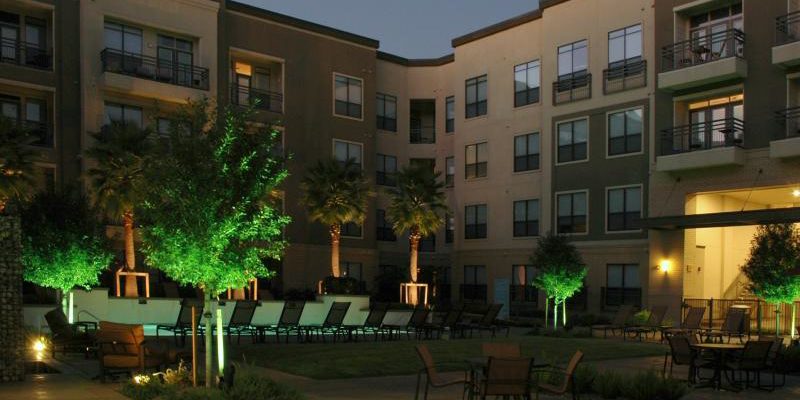Tips For Wiring Your Houston Outdoor Lights
Like other types of light, most outdoor lights need electricity to operate. That electricity is usually provided through wires. Having said that, there is no need to panic about your outdoor space getting overrun with wires. Most wiring for outdoor lighting runs underground, meaning that you won’t even see the wires after they are in place. Any above-ground wiring is usually designed to blend with the surrounding area so that it isn’t noticeable at a glance. Read on to get some helpful tips on wiring outdoor lights.
Every lighting situation requires a unique solution when it comes to wiring. For instance, the type of lighting that you choose for a pathway will usually be a lot different than what you choose for a driveway. The section below outlines some of the most popular ways to wire outdoor light fixtures.
Understanding Transformers
If you use transformers to power your outdoor lights, each light fixture is wired to the transformer. The wires themselves can either be above or below the ground. The transformer is then plugged into an outdoor outlet. Below is some more information so you can get a better idea of how these devices operate.
Transformers help your lights work in one of two ways: they either use a photocell or a timer. Transformers that operate on a timer are designed to automatically turn the lights off or on at specific times of the day. Transformers with a photocell, on the other hand, automatically detect the level of light outside, turning the lights on when it gets dark and shutting them off when it gets light. Transformers like these are popular for use in ponds.
Wiring The Lights To A Switch
Nothing is quite as satisfying as turning on a light switch and having your whole outdoor space light up. Wiring your outdoor light fixtures to a switch inside your home is a great option. There are a couple of different methods that you can use to accomplish this. The first is to wire the lights directly to the switch. The second option is to wire the lights to a transformer that is plugged into an outdoor outlet. The switch inside your home provides power to the outlet, which turns on the transformer and activates the lights. With this option, you can either turn on the lights manually or you can wait and allow them to turn on automatically when the sun goes down.
Solar Lighting
Solar lights rely on the sun upon for power. They do best in extremely sunny conditions. One of the greatest things about lights like these is that they don’t require any wiring. Typically, they have LED bulbs, which means that they use very little energy. That makes them a lot more practical than halogen bulbs for solar applications.
The Downsides To Solar Lighting
While solar lighting is easy to install, it does have some drawbacks. For one thing, the lights themselves lack the brightness of lights that are powered by electricity. This usually has to do with where they are placed. Lights that aren’t directly in the sun won’t get as bright as lights that are located in sunny areas.
No matter what type of lighting you opt for, adding outdoor lights can brighten up your home.
Lighting Up Your Exterior Space
When properly installed, outdoor lighting can enhance your home, making it much more beautiful after dark. When incorrectly designed, however, it can look a little bit garish and overdone. The key to lighting the outside of your home is to use a light touch, only placing lights in the most important areas. If you need help designing your outdoor lighting, reach out to Houston Window Coverings today.
If you would like to discover more tips and tricks from Robert Huff Illuminations; visit our blog. Call or contact us today for more information!

